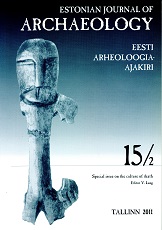REPRESENTATION OF DEATH CULTURE IN THE ESTONIAN PRESS
REPRESENTATION OF DEATH CULTURE IN THE ESTONIAN PRESS
Author(s): Halliki Harro-Loit, Kadri UgurSubject(s): History
Published by: Teaduste Akadeemia Kirjastus
Keywords: REPRESENTATION OF DEATH CULTURE ; ESTONIAN PRESS
Summary/Abstract: Death is an omnipresent part of daily life, and evokes both personal and public reactions. In contemporary mediated society we might have less personal experience of grief, but we get daily information about the death from the (news) media. On the one hand, the orientation on youth, health, happiness, success, strength, and growth marks death as failure, loss or error, not as a normal ending to all that lives. This situation is described as lack of death culture as it was known before the era of antibiotics and chemical weapons. On the other hand, death actually appears regularly in a variety of forms in the mass media. However, the way journalism covers death and grief is influenced by a specific discourse of journalism: mediated information is selected, framed, and presented in a certain conventional form. The aim of the present study is to analyse the representation of death in Estonian daily newspapers in 2010. In order to map the wide spectrum of death coverage in our everyday news, a flow a seven-scale analysis model was created. The model is on the one hand based on news factors and newsworthiness, on the other hand its aim is to capture the specific nature of death: inevitable, unexpected, final, violent, etc.
Journal: Eesti Arheoloogia Ajakiri
- Issue Year: 15/2011
- Issue No: 2
- Page Range: 151-170
- Page Count: 20
- Language: English

